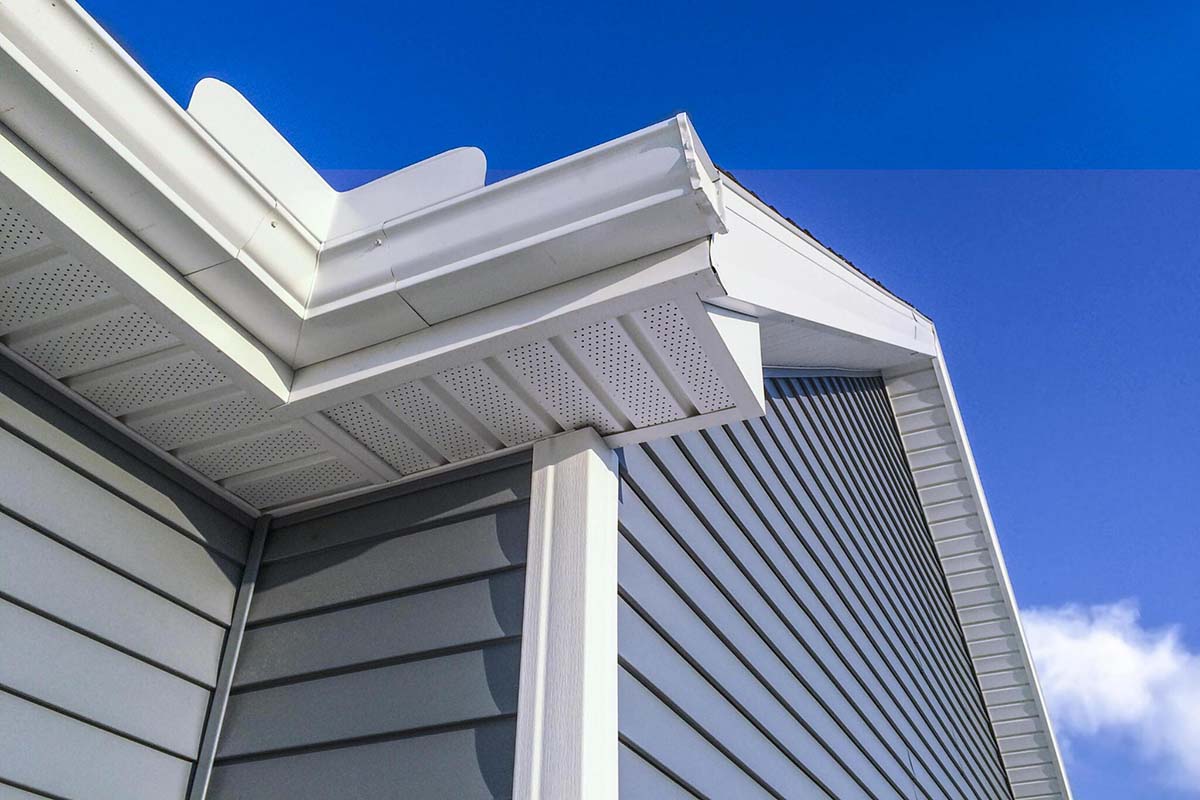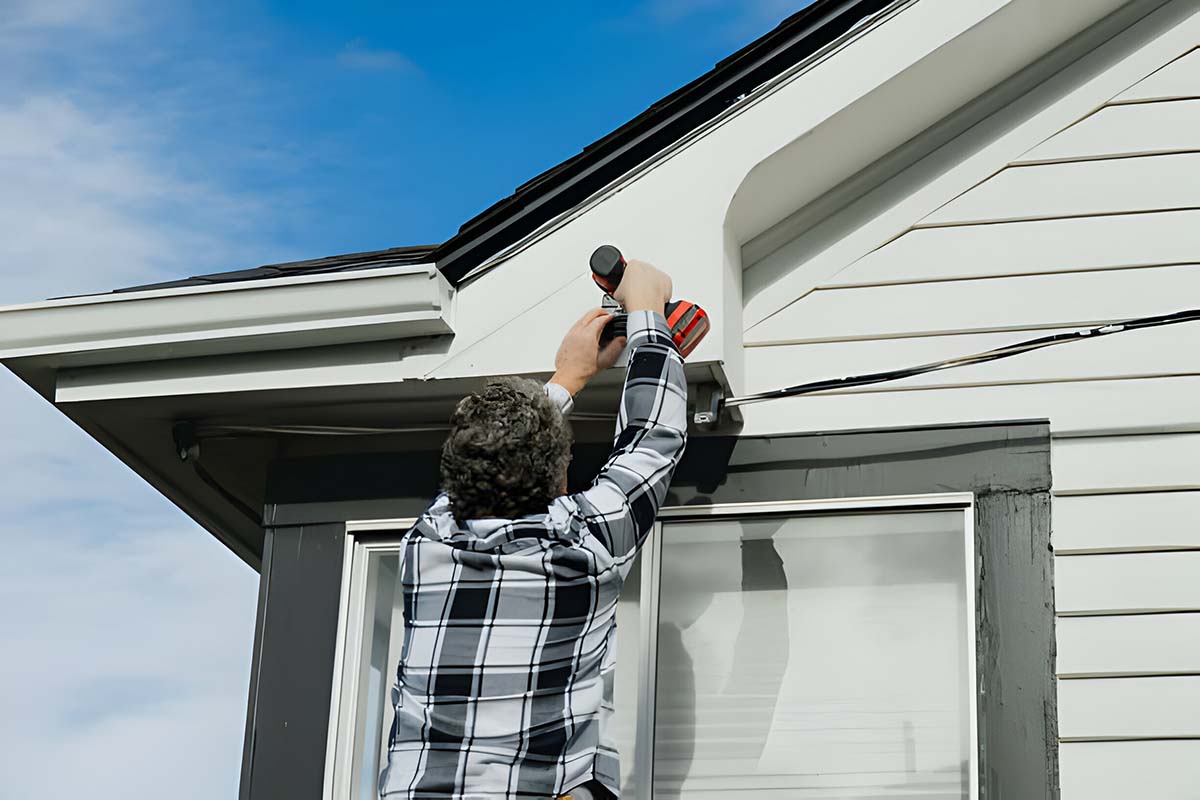How often do you give thought to the significance of siding care, despite the fact that it is one of the first things people notice about your home? Until problems like mould, mildew, filth, missing or damaged parts, cracks, or holes become obvious, siding maintenance usually doesn’t cross people’s minds. Even while it’s usually OK to wait until anything goes wrong before tending to basic siding maintenance, there are a few things that need doing on a regular basis.
The correct methods for maintaining vinyl, brick, and fibre-cement siding varies, so it’s vital to know what to do with each kind. Fortunately, siding is designed to endure the weather and often needs less maintenance than other parts of your house. Here is a comprehensive guide to siding care in order to maximise your home’s value.

Understanding Types of Siding
Naturally, houses may have a variety of siding materials, such as wood, vinyl, fibre cement, aluminium, and more. As people at Northwest Exteriors state, there is a wide variety of styles and materials to choose from, and there are other considerations like the local climate, architectural style, and money to make. Since siding comes in a variety of types, each with its own set of characteristics and cleaning needs, it’s important to know its specifics to get the most out of your siding cleaning.
Vinyl Siding
Homeowners love vinyl siding because it lasts a long time and doesn’t need much upkeep. Nevertheless, filth and dirt may still settle in and cause discoloration and the formation of organic organisms like mold and algae over time. Vinyl siding is good since it’s simple to clean and maintain, and there are a couple of methods to do so properly.
Soap, water, and a gentle bristle brush are the very minimum for the easiest approach. For this procedure, you may use a mixture of two ounces of laundry detergent and two gallons of warm water. Before applying the soapy water with the soft bristle brush, moisten the siding with a garden hose. Scrub carefully in circular motions while working in tiny parts. Before going on to the next stage, be sure to rinse each one completely with a garden hose. One problem with this method is how much work it requires. Another is that it will only remove the outside layer of any organic development (such as mold or algae). Staining may come back quite fast since the roots will remain on the siding.
The second method is usually more effective and takes less time to complete. technique two uses the same water and detergent as technique one, but it also calls for the use of household bleach. An effective proportion is one part bleach to three parts water. Apply the solution in a vertical motion, starting at the base and working your way up, and let it sit for ten to fifteen minutes. Regular reapplication or sprinkling with water will keep the siding moist. The stains should disappear shortly after using the solution; but, if it doesn’t, you may keep applying it. No scrubbing or high pressure is required; just use a garden hose to rinse.
Wood Siding
Adding wood siding to your home’s exterior will give it a lovely, rustic appearance. Cedar or pine are some of the natural woods used to make it. On the other hand, compared to other siding options, it is more maintenance intensive. Before you can clean wood siding, you must identify the kind of finish it has. You may have to change your strategy based on the response.
If it’s painted, the same procedures that work with vinyl siding may also be used. Be careful to do a little, inconspicuous area as a test place. If it’s stained, you shouldn’t use the bleach solution, but the brush and soapy water procedure should be OK.
Fibre Cement Siding
In the last ten years or more, fibre cement siding has grown in popularity as an external product. Siding that is resistant to mould and mildew is a long-lasting, low-maintenance alternative, but it is more costly than other siding options. But it may still become filthy and worn out with time. You’ll probably need a scrub brush to clean fibre cement siding. To begin, use a garden hose to moisten the siding. Then, use the soap and water cleaning solution. When applying the detergent, start at the bottom and work your way up. Scrub carefully in circular motions while working in tiny parts. Before going on to the next stage, be sure to rinse each one completely with a garden hose.
Aluminium Siding
Aluminium siding is an attractive, low-care choice that comes in a rainbow of hues. Its heyday has passed, but it’s still a prevalent siding material for older houses. Although aluminum siding is long-lasting, it is susceptible to scratches and dents. Because of a process often referred to as “oxidation,” it may also get discoloured over time.
Simply sliding your finger over the siding will reveal any oxidation that may be present. The siding has oxidised if a powdery residue is visible. Even with a thorough cleaning, the problem will remain. It is possible to extend the lifespan of oxidised aluminium siding by painting it. On the other hand, maybe you should just get a new one. You may clean it using either a bleach solution or a soap and water brush. Either way will get the job done, but it’s wise to tackle a small area first.

Tips for Effective Cleaning
Here are some effective tips you should remember:
– Once a year, give your siding a good cleaning to eliminate any built-up dirt and grime.
– To protect your siding, use a gentle cloth or a brush with softer bristles.
– Before going on to the next stage, be sure to rinse each one completely with a garden hose.
– You should not use high-pressure washing on your siding since it might cause harm.
– To clean your siding, use a gentle soap and water mixture or one made for your siding type.
– Always make sure to use protective gear such as gloves and safety glasses.
– Check the siding frequently for damage or indications of wear and strain.
Common Mistakes to Avoid
Siding cleaning may not seem complicated, but there are numerous issues to watch out for:
– Siding may be damaged and water can be forced beneath the siding if you use a high-pressure washer.
– Scratching and damage to your siding might result from using abrasive cleaning instruments, including wire brushes.
– If you clean your siding with the improper solvent, it might fade or even harm the surface.
– You risk leaving cleaning solution residue on your siding if you don’t rinse each part properly.
– Cooling the surface with water before applying any cleaning product is a good move for siding that faces the sun or is in a hot area. The cleaner won’t “flash dry,” which is a problem that may be a pain to fix.
When it comes to protecting your property from the weather, your siding is an excellent choice. In tandem with your roof, these two features shield you from inclement weather, whether it’s a blizzard, a tornado, a hurricane, or whatever else Mother Nature throws at you. Unless there’s an ongoing issue, most homeowners don’t give their siding much thought.
Always bear in mind that siding may be kept looking like new for a longer time with regular preventive care.








